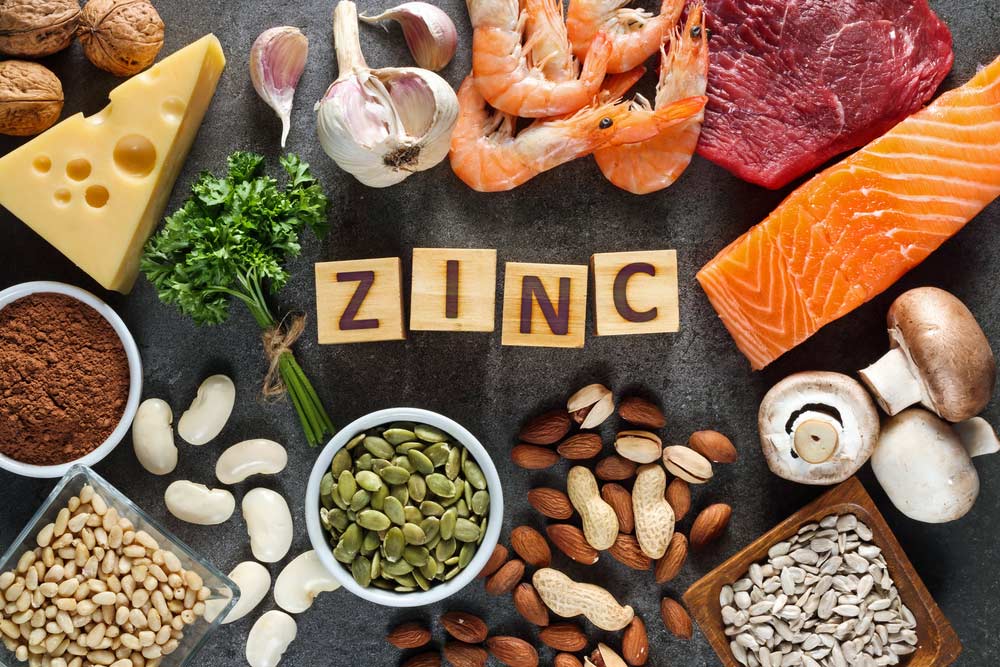Mineral and heavy metal testing can help to gain a better understanding of what metals may be impacting on health and what minerals are required to increase to enhance performance and overall health. Optimal nutritional balance is essential for the function of every cell and system in your body. Obtaining feedback on mineral absorption is just one of the benefits of mineral testing for athletes.
Mineral testing provides a wider perspective on an individual’s overall health status than just urine, blood or stool pathology testing alone although it is always useful to use both tests in conjunction with each other. Mineral testing can be used as an early detector of subclinical issues and provide useful guidelines in terms of how to best support the body when annoying symptoms such as fatigue, insomnia and digestion issues persist.
In clinical practice, test results are always accompanied by a thorough assessment of your overall health and nutritional intake to provide meaningful context to data and to give you a clear understanding of where and how deficits may be occurring.
A mineral analysis may provide insight into your current health status, identify potential areas of concern and provide suggestions around dietary and supplemental measures that may improve your health now and prevent issues in the future.
Mineral testing for athletes- useful insights
Mineral testing provides a snapshot of how the body is utilizing the nutrients obtained from your food and provides an analysis of 13 key minerals. Trends in nutrient deficiencies or excessive mineral levels may indicate poor activation and non-beneficial storage of nutrients.
To demonstrate this point, let’s take a look at calcium. Calcium will be maintained within a very narrow range in blood serum due to its life-supporting roles in managing heart rate, nerves, and muscle function. However, in a mineral analysis high or levels of calcium may be observed. Low levels of calcium may indicate poor absorption, inadequate intake or other nutrient issues such as low vitamin D, while high levels may be suggestive of low vitamin B6 and poor calcium utilisation in the body.
High calcium levels may also contribute to underactive thyroid issues with symptoms such as weight gain, fatigue, low blood pressure and poor mood. Early detection of calcium issues is vital for the prevention of bone issues such as osteopenia, fractures, bone spurs, kidney stones and thyroid issues.
Mineral testing for athletes provides an analysis of how the body is utilizing 13 key nutrients obtained from the athlete’s diet. Longer-term patterns in nutrient deficiencies or excesses may indicate poor activation and non-beneficial storage of nutrients.
To demonstrate this point, let’s take a look at calcium. Calcium will be maintained within a very narrow range in blood serum due to its life supporting roles in managing heart rate, nerves, and muscle function. However, in a mineral analysis high or levels of calcium may be observed. Low levels of calcium in mineral testing for athletes, may indicate poor absorption, inadequate intake or other nutrient issues such as low vitamin D. High levels in mineral testing for athletes, may be suggestive of low vitamin B6 and poor calcium utilisation in the body.
High calcium levels may also contribute to underactive thyroid issues with symptoms such as weight gain, fatigue, low blood pressure and poor mood. Early detection of calcium issues is vital for the prevention of bone issues such as osteopenia, fractures, bone spurs, kidney stones and thyroid issues.
Significance of mineral testing for athletes
A clinical understanding of how an individual metabolises and utilises nutrients can be obtained through various mineral ratios included in a mineral test. Just some of the ratios contained in the mineral analysis report are outlined below:
Immunity: Low zinc in relation to high copper levels may indicate a susceptibility to viral infections such as colds, cold sore outbreaks or poor wound healing. Zinc is critical to immune cell function and digestion and hydrochloric acid. Reduced digestive function and symptoms such as bloating, diarrhoea, malabsorption and low nutrient levels may also be observed in patients with low zinc.
Iron deficiency and anaemia: As discussed previously in relation to immunity, ceruloplasmin is a protein carrier shared by zinc, copper and iron. If zinc, copper or iron are too high, they may inhibit the absorption of the other minerals. For example -high levels of copper may be observed in women taking the oral contraceptive pill or through drinking water carried in copper pipes. High copper levels may contribute to iron deficiency anaemia and present as shortness of breath, lethargy, dizziness and exercise fatigue.
Poor liver detoxification: Molybdenum is a key nutrient required for liver detoxification and is frequently low on test results due to reduced intake of foods rich in molybdenum such as legumes. When molybdenum is low in relation to sulfur an individual may experience sluggishness, fatigue, skin issues, and poor recovery related to reduced sulfation detoxification pathways in the liver.
Blood sugar control issues: Manganese and chromium are key nutrients required for blood sugar control. When manganese is low in relation to chromium an individual may experience energy dips, especially after meals, sugar cravings and dizziness or sweating related to poor blood sugar control and fluctuating insulin levels.
Hormone issues: Minerals play a key role in hormone modulation. When iron is low in relation to copper, individuals may complain of fatigue, poor recovery, weakness, loss of libido, irregular periods and hot flushes due to a pattern of low progesterone or testosterone.
Adrenal gland insufficiency: During times of stress, the adrenal gland utilises larger amounts of sodium and magnesium. When sodium levels are low in comparison to magnesium the adrenal gland may be underperforming as it is highly sodium dependent to produce key hormones such as cortisol.
General muscle tightness: Calcium and magnesium are required for bone health and muscle and nerve function. Stiff muscles, bladder issues and immobile joints may present when there is an issue between the ratio of calcium and magnesium in the body.
HEAVY METAL BURDEN
This form of testing may also identify heavy metal burden on the body. Despite a clean lifestyle, individuals can present with unfavourable levels of mercury, arsenic, lead, tin or aluminium largely due to living in a modern environment where exposure to heavy metals occurs on a regular basis.
Contrary to popular belief, heavy metal accumulation does not necessarily occur from occupational exposure. Frequent exposure arises from pesticides; additives and the tinning of foods; dental fillings; drinking water; products and materials used in homes and offices; personal care products and cosmetics.
Heavy metals are neurotoxins and may over time contribute to a plethora of health issues such as thyroid, reproductive and mental health issues, and cancers. Heavy metals displace other key minerals such as zinc, selenium and iron. The presence of these metals may also be indicative of other functional issues such as reduced liver detoxification pathways.
Practicalities of mineral testing for athletes
Mineral testing looks at long-term trends (over 2-3 months) and can be very useful when symptoms or health issues are ongoing and underlying contributing factors are yet to be identified. Athletes also find mineral balance results useful before they launch a new training campaign as a measure of nutritional status and as a preventative measure against deficiencies that may inhibit performance.
Mineral testing does not require a blood draw and can be conducted in the privacy of your own home. Test results generally take 2 weeks and are reviewed during an extended consultation.
For further information or to order a test kit email contact us or book in for your initial consultation.









